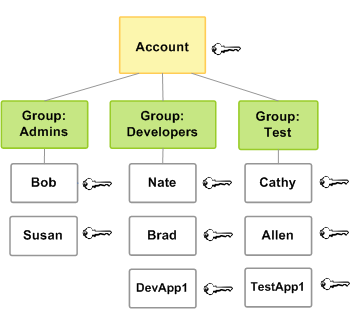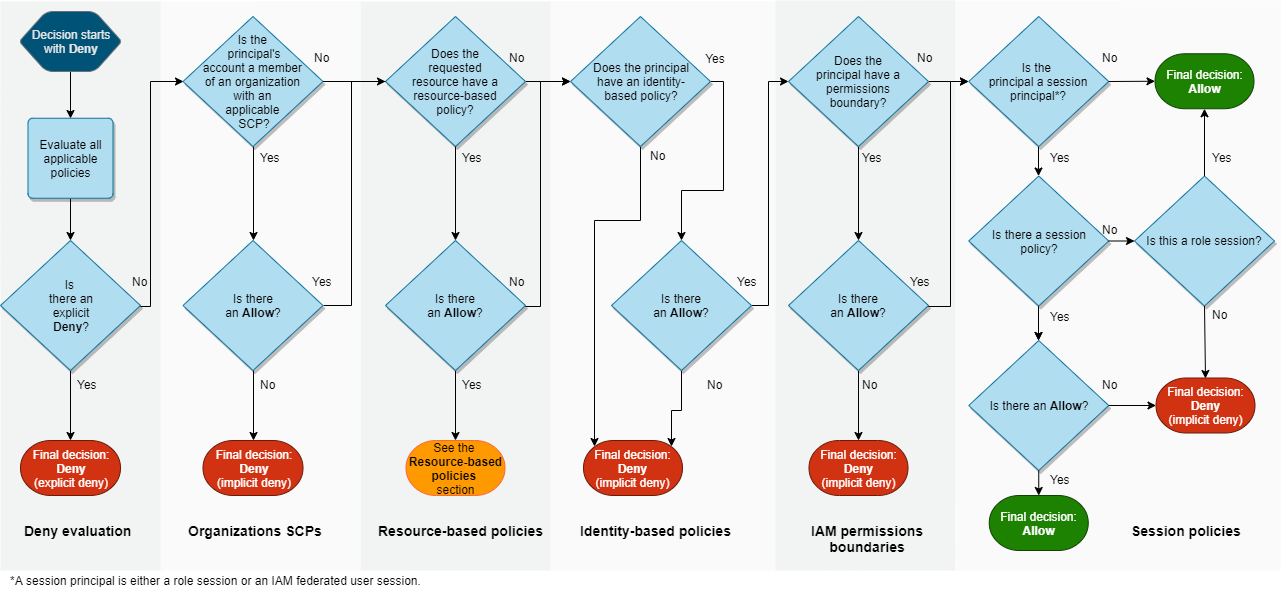8.0 KiB
AWS Enumeration
Regions
A list of services by region is maintained by AWS There are global and regional services.
Watch out for the global and regional Security Token Service (STS) which provides temporary access to third party identities, since regional STS are also valid in other regions. Global STS are only valid in default regions.
In aws cli, Regions go the cli argument --region
Simple Storage Service (S3)
S3 is an object storage without volume limits. The names of buckets are unique and the namespace of buckets is global but they are stored regionally.
Methods of access control are as follows
The aws cli scheme is
http://<bucketname>.s3.amazonaws.com/file.name
or
http://s3.amazonaws.com/BUCKETNAME/FILENAME.ext
Check Permissions of a bucket
Do a PUT method to see if the bucket may be writeable to upload a file via
curl -vvv -X PUT $BUCKET_URL --data "Test of write permissions"
List content of public bucket via
aws s3 ls s3://<bucketname>/ --no-sign-request
Download via curl, wget or s3 cli via
aws s3 cp s3://<bucketname>/foo_public.xml . --no-sign-request
ACL
If the ACL is set to
Anyone, justcurlAuthenticatedUsers,s3cli with aws key
Identity Access Management (IAM)
Permissions are granted directly through IAM identities (IAM Principals) inside an AWS account or indirectly through roles the user has joined.

Gaining access to important roles like maintenance opens the door to higher permissions. An always unique AWS Account ID has a length of 12 digits.
The IAM is not necessarily used by S3. AK/SK is sufficient for authentication and authorization.
- Access key ID, starts with
AKIA+ 20 chars - Secret access key (SK)
- Session token,
ASIA+ sessionToken - AWS Organizations control accounts who joined
- Third party identity providers are supported
- IAM identity center of an organization allows provision of accounts from third parties through the AWS SSO
Root Accounts
Every AWS account has a single root account bound to an email address. This account has got the all privileges over the account. A root account has MFA disabled by default. Has all permissions except Organizational Service Control Policies.
The account is susceptible to an attack if the mail address is accessible but MFA is not activated.
If the MFA is not set, it is an opportunity for a password reset attack when the account the vulnerable root belongs to is part of an AWS Organization.
(User) Policies
After authentication of a user (or principal) policies of the account are checked if the request is allowed. Policy evaluation can be found in the AWS docs. A policy may also be attached to a resource.
The following graph is taken from the documentation, it shows the evaluation logic inside an account

Policies like assume-role and switch-role can lead to the gain of roles
with higher permissions
AWS Organizations
An organization is a tree structure, made out of a single root account and Organizational Units (UOs). UOs can have children UOs. AN UO may contain multiple AWS accounts. An AWS account can contain multiple user accounts.
An organization has IAM and SSO that also works with external identity Providers (idP). This is done through the AWS IAM Identity Center which is used to confiure roles and permissions.
Further, there is a management account inside any organization. It owns the
role "OrganizationAccountAccessRole". This account uses the policies/roles
mentioned in the User Policies which are assume-role and
switch-role on the cli tool and the management web-console to gain
administrative permissions over the UOs inside the organization.
By default the Service Control Policy (SCP) p-full-access it attached to
every account inside the organization. This SCP allows subscription to all AWS
services. An account can have 5 SCPs at max. Limiting SCPs do not apply to the
management account itself.
User Provisioning
When using the cli command, the aws configuration and credentials are stored at ~/.aws
Add credentials to profile via
aws configure --profile PROFILENAME
Sanity test a profile through checking its existance via
aws s3 ls --profile PROFILENAME
Find account ID to an access key
aws sts get-access-key-info --access-key-id AKIAEXAMPLE
Find username to an access key
aws sts get-caller-identity --profile PROFILENAME
Listing EC2 instances of an account
aws ec2 describe-instances --output text --profile PROFILENAME
In another region
aws ec2 describe-instances --output text --region us-east-1 --profile PROFILENAME
Secrets
aws secretsmanager help
aws secretsmanager list-secrets
ws secretsmanager get-secret-value --secret-id <Name> --region <region>
Amazon Resource Name (ARN)
The ARN is a unique ID which identifies resources.
A Unique ID is create through the following scheme
arn:aws:<service>:<region>:<account_id>:<resource_type>/<resource_name>
Virtual Private Cloud (VPC)
Is a logic network segementation method using its own IP address range. Contains resources like VMs (EC2) and has an Internet gateway if needed. The gateway can be either just ingress, egress, or both. EC2 can use elastic IP addresses to provide Ingress. A Gateway Load Balancer can be used to do traffic inspection.
To connect to a VPC, it does not need to be exposed to the Internet. It is accessible through various connection services like Direct Connect or PrivateLink.
VPCs can have multiple subnets, they use host infrastructure components like DHCP, NTP and DNS provided by AWS.
NTP can be found under 169.254.169.123. The DNS resolver Route 53 can be
found under 169.254.169.253. Microsoft's KMS service can be at 169.254.169.250
and 169.254.169.251.
Metadata Service
The instance (Openstack) Metadata service can be found under 169.254.169.254. It can be used to gain information about the EC2 via a GET request to http://169.254.169.254/latest/meta-data .
The task metadata service can be found at 169.254.170.2 and is used for the Elastic Container Service (ECS).
The instance metadata service has been used for information disclosure of security credentials before. Alexander Hose describes how to use the credentials through aws-cli.
[ec2-user ~] curl http://169.254.169.254/latest/meta-data/iam/security-credentials/
ec2S3FullAccess
[ec2-user ~] curl http://169.254.169.254/latest/meta-data/iam/security-credentials/ec2S3FullAccess
{
"Code": "Success",
"LastUpdated": "2022-10-01T15:19:43Z",
"Type": "AWS-HMAC",
"AccessKeyId": "ASIAMFKOAUSJ7EXAMPLE",
"SecretAccessKey": "UeEevJGByhEXAMPLEKEY",
"Token": "TQijaZw==",
"Expiration": "2022-10-01T21:44:45Z"
}
Use the credentials to configure aws-cli.
$ aws configure
AWS Access Key ID [None]: ASIAMFKOAUSJ7EXAMPLE
AWS Secret Access Key [None]: UeEevJGByhEXAMPLEKEYEXAMPLEKEY
Default region name [None]: us-east-2
Default output format [None]: json
Add the credentials to the AWS credentials file
[default]
aws_access_key_id = ASIAMFKOAUSJ7EXAMPLE
aws_secret_access_key = UeEevJGByhEXAMPLEKEYEXAMPLEKEY
aws_session_token = TQijaZw==